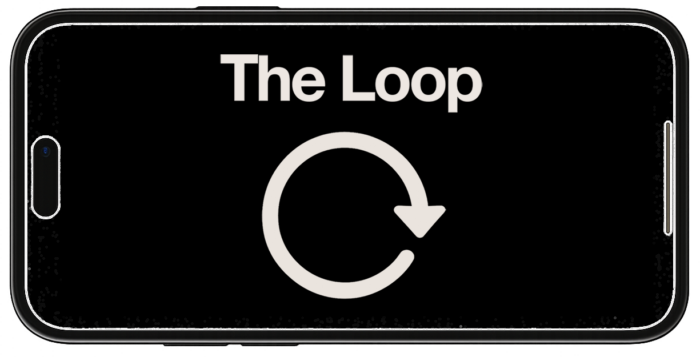No matter how much experience you have as a Meta advertiser, expect to learn something new that surprises you to the point of questioning many of the things you once believed about them. Put Meta click attribution into this category.
I started this website in 2011. I’ve written and educated others on the topic of Facebook — and then Meta — advertising since 2012. I make it my responsibility to know every nuance on the topic as well as one could reasonably expect to know it. And yet, here we are.
Meta click attribution — how Meta gives credit for a conversion after clicking an ad — does not work entirely the way I’ve assumed it did for the past decade. If that’s true for me, it’s likely to be a surprise for you, too.
Meta’s documentation on click attribution is ambiguous. It’s easy to make assumptions based on what it does and does not say. It wasn’t until I ran a test that I have clarity on what it actually means.
I am certain that I am part of the majority who misunderstands click attribution. The confusion matters. This is surely the source of many of the reporting complaints that advertisers have.
In this post, I’ll cover the following:
- Click attribution and how I assumed it worked
- Meta’s documentation and a lack of clarity
- A test for confirmation
- Why this matters
Let’s go…
Click Attribution and How I Assumed it Worked
Attribution is how Meta gives credit for an ad. By default, Meta reports a conversion if it happens within 7 days of clicking or 1 day of viewing your ad without clicking.

View-through conversions are the source of the most controversy. In this case, Meta can give an ad credit for a conversion even though the person never clicked it — assuming they converted within a day of the ad impression.
Click-through felt a bit more straight-forward. These are people who clicked your ad and went to your website. They may not have converted immediately, but that conversion happened within seven days. Your ad very clearly contributed to that conversion.
View-through conversions are a reporting black hole. Only Meta knows whether a person was shown your ad, didn’t click, and then converted within a day. It’s very difficult to prove or disprove.
Click-through conversions reported in Ads Manager will not always match up with third-party reporting, but they should typically be close. You can use UTM parameters to help give reporting tools more insight into whether customers came from your ad. You could also use 1-day click attribution, which should help limit cross-device and multiple-session visits.
Click attribution is more dependable and easier to back up with other reporting because it requires a click from your ad to your website (or so I assumed). Any differences in reporting could generally be explained by the complicated journey that can happen over a seven-day period.
Meta’s Documentation and a Lack of Clarity
Click attribution first became my focus about a month ago when an astute reader asked me whether click attribution required an outbound click on your ad to your website. I reflexively replied that it did.
But I wanted to cite official documentation so that it didn’t seem as though I were making it up. The problem was that I couldn’t find any such clarity.

I went through page after page of Meta’s documentation on attribution. Nowhere was it clearly stated that click attribution requires a click on an outbound link on your ad. It also doesn’t say that it could be any click — clicks on images, videos, reactions, comments, or something else. It’s completely ambiguous.
Because of this ambiguity, I wasn’t ready to disregard what I believed to be true based on more than a decade of experience on the topic. But I also didn’t want to continue believing it blindly.
A Test for Confirmation
This situation was primed for a test. Meta might not be clear about what they mean by click attribution, but a strategically-run test could prove it.
Does click attribution include all clicks that result in a conversion, regardless of whether someone clicked an outbound click on my ad? In order to know for sure, we’d need to eliminate the outbound click option.
I created a campaign using the Engagement objective with the following conversion location settings:
- Conversion Location: On Your Ad
- Engagement Type: Post Engagement
- Performance Goal: Maximize Daily Unique Reach

Targeting isn’t particularly relevant, but I wanted to be sure to reach a highly engaged audience who would be excited to participate in my experiment. So, I used original audiences and targeted people who were engaged on my email list during the past month.
To keep this simple, I used only the Facebook feed placement. I didn’t want to worry about versions and quirks by placement.
Here is my ad:

The primary text did not include a URL. I made it clear that I was running an experiment and asked people to follow the instructions in the image.
They were asked to do the following:
- Click the image
- Open a browser tab
- Go to jonloomer.com/experiment
- Follow all instructions on that page
I asked for the click to make click attribution possible. I didn’t include the URL in text so the link itself could not be clicked.
When they went to that page, people were asked to click a button.

Once that button is clicked, a confirmation page loads and a custom event unique to this experiment (the custom event is called “experiment”) fires.
Test Results
If click attribution worked the way I originally assumed, the only conversions that Meta could report would be view-through. If someone viewed my ad, didn’t click an outbound link on my ad, and then converted within a day, that falls within my preconceived view-through definition.
But if click attribution doesn’t require clicks on an outbound link, we will know that immediately by comparing attribution settings. If there’s even one conversion reported using 1-day click, it’s clear evidence that an outbound click isn’t required.
It didn’t take long to get confirmation.

Meta attributed 33 conversions using the “Experiment” custom event. All 33 were the click-through variety.
This is convincing evidence, if not proof, that click attribution does not require a click on an outbound link.
Why This Matters
I’m not going to lie. This shook me.
For years, I was confident that click attribution required a click on an outbound link. And why wouldn’t it? If someone converts without clicking an outbound link, we already have a category for that: View-through conversion.
We know that view-through conversions are a reporting black hole. If you have huge reporting discrepancies between Ads Manager and GA4 or other third-party reporting software, the problems typically start there.
But now I’ve learned that many of the conversions that I’ve long believed to be view-through are actually falling into the definition of click attribution. And while view-through conversions are limited to a one-day window, these conversions can happen within seven days.
Your 7-day click conversion numbers consist of people who clicked the link in your ad. But they could also include people who made other clicks — on your image, video, comments, reactions, and more. If they convert within seven days, they’re counted.
Counting these conversions isn’t necessarily the problem. The issue is that you can’t separate the click conversions that happened from clicking an outbound link (the most valuable conversions) from those who clicked something else.
This will matter most when remarketing. Someone who is on your email list gets served an ad impression. They may “like” it simply to show appreciation. They get an email within seven days that they act on. The ad that was “clicked” then gets credit for a conversion.
I would normally say to mostly ignore view-through conversions when remarketing. They aren’t nearly as valuable as when reaching a cold audience — someone who would need to take steps to find your product again to complete the conversion.
But this tells me that it’s impossible to completely ignore view-through — and other conversions that don’t require a click on a link. Your numbers are likely to be inflated.
This also matters for those wanting to confirm their results. UTM parameters will not help you confirm this type of click attribution. Like view-through, you’ll need to take Meta’s word for it.
That leads to reporting discrepancies and frustration.
How Common Is It?
One question I have that is difficult to answer is regarding how often this type of conversion happens in the first place. We’re likely dealing with an extreme minority of reported conversions in most cases. And really, this is a big reason why I was oblivious to these conversions in the first place.
But there are a couple of factors involved…
1. Do you feature a link?
The typical static link ad provides very few options for clicking that don’t result in a click to your website. This includes carousels. If you click anywhere on the creative area of an ad, you’ll be redirected to a website.
There remain other clicks, of course. But then you’d need a scenario where someone from a cold audience “likes” your ad and then Googles you later. Granted, I saw this as a view-through conversion before, but it shouldn’t make up a large percentage of your click conversions.
2. Do you run remarketing campaigns?
Remarketing results are already likely to be inflated if you aren’t careful. Whether it’s ignoring view-through conversions or using 1-day or 7-day click attribution in the ad set, there have been ways to add context so that you aren’t misled by inflated numbers.
But now I’m seeing that it’s even more difficult to control these inflated numbers than I thought. You could ignore view-through conversions. But if you target people who receive your emails, visit your website regularly, or simply would have converted without seeing your ad, your are likely to reach people who click without clicking through to your website.
When that happens, you are likely to assume that they clicked through. But it will be impossible to know for sure. And Meta’s optimization will go after more of these people to get you the results that you want.
What Meta Must Do
First, Meta needs to clarify their documentation on attribution. It can’t be ambiguous. The definition of click attribution should specify that it includes all clicks, not just clicks on outbound links. Don’t let anything be assumed or it will seem deceptive.
But that’s not enough. We need more clarity in reporting. Meta provided this with engaged-view attribution. It tells us that while a conversion didn’t result from a click, the person watched your video for at least 10 seconds before converting.

We need something similar for click attribution. Otherwise, it’s impossible to separate those who actually clicked through from those who didn’t. Not only does that result in misleading reporting, but it can pollute Meta’s optimization.
How You Should Approach This
There isn’t much we can do differently as advertisers in response to this information. But it can provide important context that we can use to better understand the chaos of results.
Your results will never match up with third-party data. You can use UTM parameters and various tools that claim to fill in the blanks, but there will always be unexplained discrepancies.
Know why these discrepancies exist. Know that it’s because of view-through conversions, cross-device conversion journeys, and tracking limitations. But also know that even if you isolate click attribution, there are likely to be conversions that didn’t result from a click on an ad to your website.
We simply need to accept that and convey that guarantee of uncertainty to clients.
Your Turn
What are your thoughts on how click attribution works?
Let me know in the comments below!







